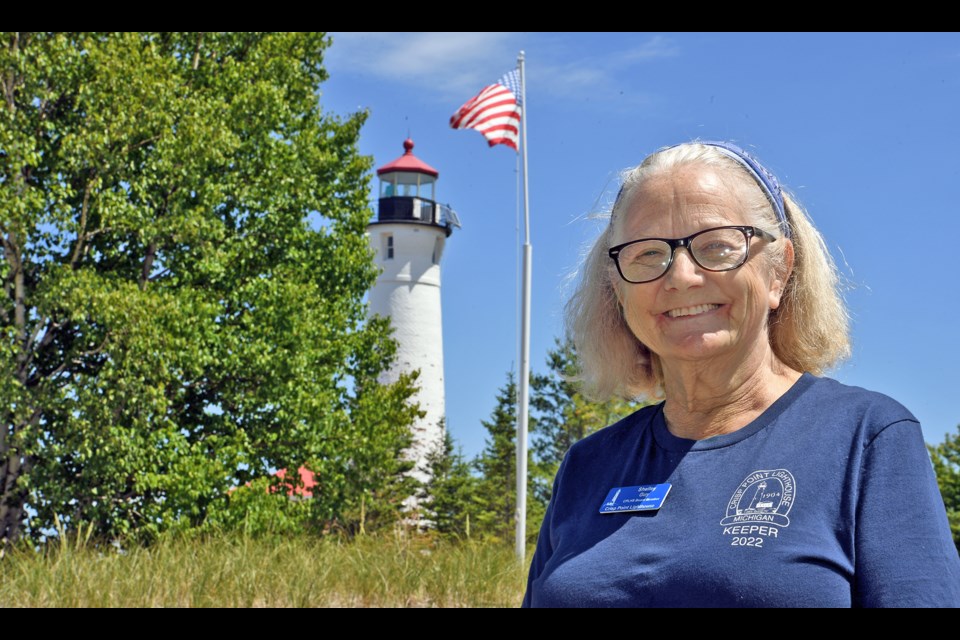It was the winter of 1998 and Crisp Point lighthouse was three feet from falling into Lake Superior. One more storm and the 58-foot tower would be nothing more than a collapsed pile of bricks.
That is when Crisp Point Lighthouse Historical Society stepped in.
Member donations covered $42,000 for 50 truckloads of stone brought in from Newberry and dumped along 300 feet of shoreline in front of the tower. The emergency effort was a turning point for what is now a major draw for visitors from all over the US and Canada.
Last year, 15,621 people made the 30-minute trip from Tahquamenon Falls on dirt roads to enjoy not only the lighthouse tower, but a giftshop, 100 yards of interpretive boardwalk, almost a mile of picturesque shoreline, and a burgeoning collection of relics on display.
That headcount - which is set to be bettered this year by at least a few thousand - helped the society land a $60,000 grant from Michigan State Historic Preservation Office. It will help cover a major renovation of tower brickwork, beginning August 1.
Society board member Shelley Guy along with her brother, Duke, were serving as hosts and staff for the society bookstore on Crisp Point the week of July 18. Her relationship with the historic light began in 1981 almost by accident.
“Our family was camping near the mouth of the Little Two-Hearted River,” she recalled. “The property owner suggested we visit this lighthouse and gave us directions. After driving what seemed like forever and having to walk the last mile, here we came upon this totally awesome sight.”
Guy was carting her then two-year-old daughter in tow.
“I still have photos of her under a beach umbrella,” added Guy. “We collected wood and had a beach fire to cook hotdogs.”
The daughter, now 42 and living in Grand Rapids, has a lifetime membership thanks to her mom. Guy has also given lifetime memberships to her other two children and four grandkids.
Crisp Point lifesaving station opened in 1876 to join five other lifesaving stations arrayed along Lake Superior’s shipwreck coast, between Sable Point near Grand Marias to Whitefish Point at the opening of its namesake bay.
At the time, ships on Lake Superior were almost as plentiful as tractor-trailer trucks are on today’s Michigan Interstates.
Close to 100 ships were wrecked along roughly 110 miles of shoreline over a 30-year period. The lifesaving stations were spaced roughly 10 miles apart. Surfboat crews launched on a moment’s notice to rescue sailors in distress. Station staff also patrolled the shoreline looking for wreckage and, in some cases, recovering bodies after big storms.
Crisp Point gained its lighthouse in 1904. As lake freighters got bigger and safer, and with the advent of radio, the need for lifesaving stations diminished until they were closed entirely in the 1930s. Crisp Point lighthouse was shuttered as a crewed station in 1947.
In 1965 the Coast Guard demolished station buildings along with three long docks to curtail vandalism. Only scattered remains and the tower with an attached access building remained when the Crisp Point Lighthouse Historical Society, founded in 1991, gained a 40-year lease on the property from Luce County in February 1997.
Today the society boasts more than 800 members. At any given time, Guy and other board members can tap the instant assistance of dozens of volunteers to help with everything from routine maintenance to providing a 24-hour presence – lighthouse “keeping” – in blocks of a week at a time. Many members plan their whole summer around Crisp Point.
The lighthouse remains open until October 21. Depending on the condition of Luce County Roads 500 and 412 coming out of winter, it will reopen next Memorial Day. Run a Web search on Crisp Point Lighthouse to join the society, keep abreast of events, and subscribe to postings on social media.



